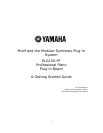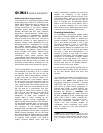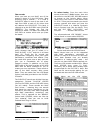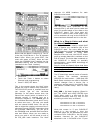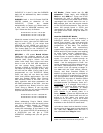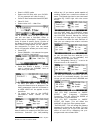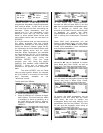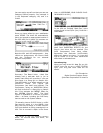
6
•
Start in VOICE mode
•
Select the PLG Slot with your PLG150-
PF (our example will refer to slot 1)
•
Press F2 Bank and select bank 032/000
•
Place F1 PLAY
•
Select Voice H13: --Wah Clav
This is a Board Voice (P1-B)
4
. Play it and
you will see that a wah-wah effect is
already active (Auto-Wah). I selected this
Voice to show a specific point: Certain of
the Board Voices on the PLG150-PF already
have effects programmed on the board –
the assignment is fixed. You can tweak
them via controller offsets (as we will see).
•
Press EDIT
•
Press COMMON – this selects the upper
level of editing (see below).
•
Press the TRACK 1 button – in this
case it selects the ELEMENT level of
edit mode (see below).
•
F1 OSC/ SF1 Wave – this screen is
where the Board Voice is assigned. The
Motif parameters that will be stored in
a USER VOICE will be applied to this
waveform.
•
F4 opens the door to the NATIVE
parameters: those “native” to the
board.
“PF Mode” deals with the PLG150-PF
board’s ability to respond to SUSTAIN as a
continuous controller (for half-pedaling
4
The 1 in P1 refers to the SLOT number. If your
board is in slot 2 it will be P2-B.
effects etc.) if you have a pedal capable of
sending Sustain as a continuous stream of
data. The Board also has its own two-band
tuneable EQ. PAGE right with the cursor
arrow.
Like the Motif itself, the PLG150-PF board
can have up to 4 Elements to a Voice (see
the PLG150PF Owner’s Manual for listings
of Voices). Although this is fixed (preset)
you do have an offset for each Element so
that you can change the relative volumes
between elements.
As you can see from the asterisks (***)
(means parameter is not available) the
Wah-Clav is a 2-element Voice.
AC1 or “Assignable Control 1” is set to do
Element Level on EL1 and EL2.
The REV and CHORUS processor can only
be used if it is activated already. For most
Voices you will use the Motif’s REVERB and
CHORUS processors.
“INS LFO FRQ” translates to INSERT
EFFECT Low Frequency Oscillator
Frequency. This will offset the SPEED of
the wah-wah, in this example.
“INS LFO DPT” translates to INSERT
EFFECT LFO Depth. This will offset the
AMOUNT of wah-wah Filter sweep depth.
“INS DRY/WET”. This will offset the balance
between dry signal and the effect. This will
effectively allow you to turn the wah-wah
effect on and off by offsetting the pre-
programmed value toward DRY.



